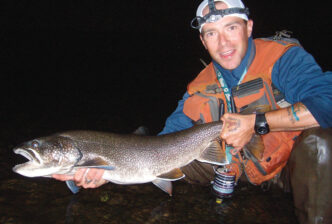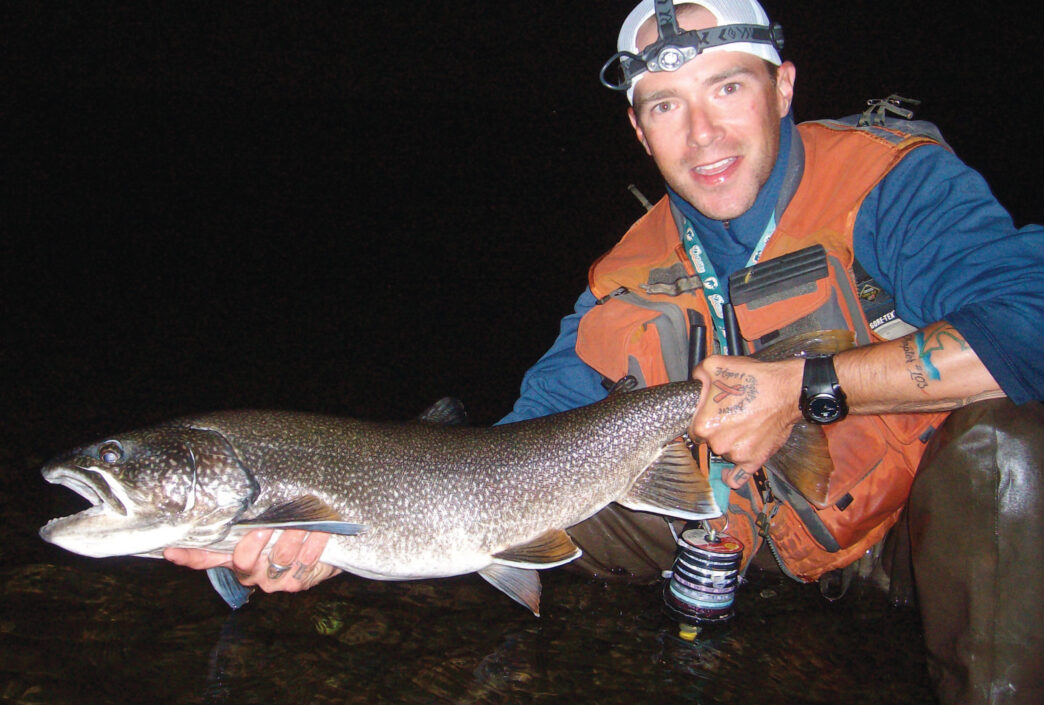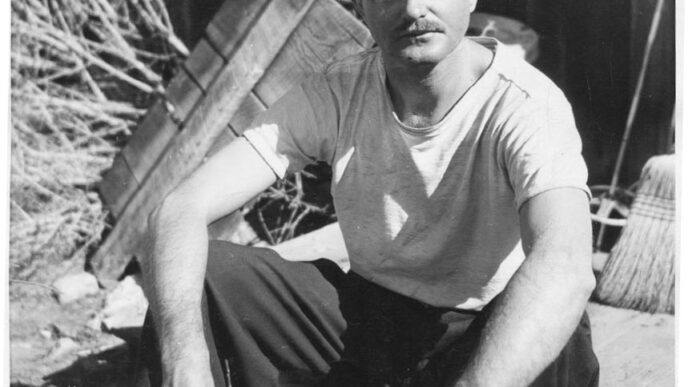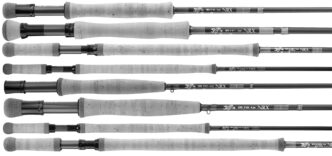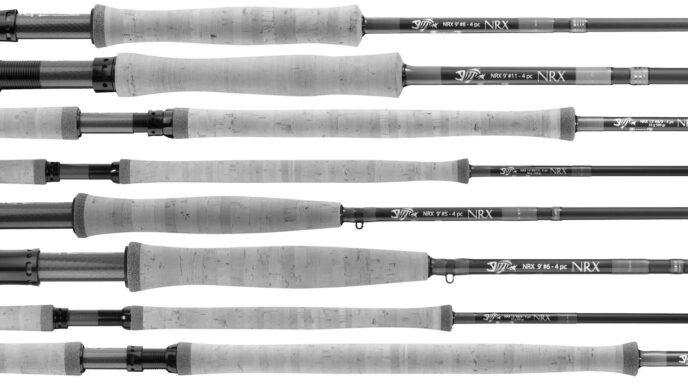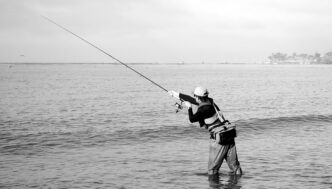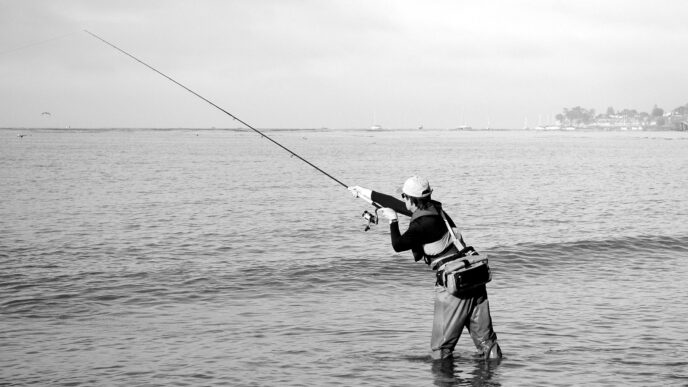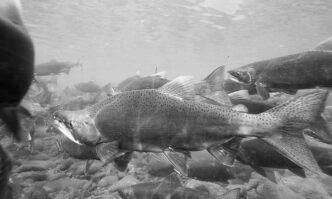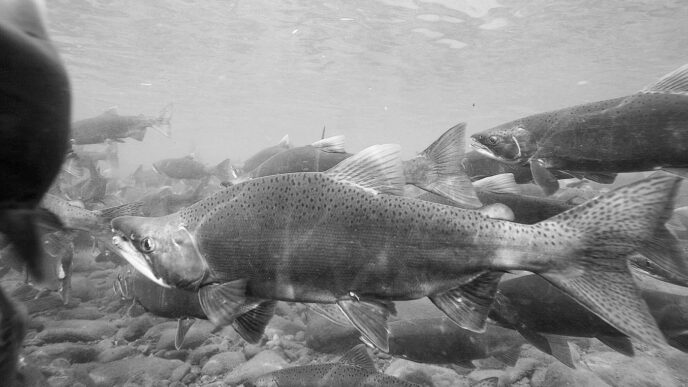Few anglers are willing to venture into the dark of night to pursue fish they can otherwise try to catch during the light of day. I sometimes find it difficult myself to pack up my fly rod and waders, jump in the fishing truck, and get ready to go wet a line just as bedtime is approaching. But when the moon is full, a visit to a lake or stream can be very rewarding if you give up an hour or two of sleep and instead try your luck with the trout.
That big, frozen rock in the sky that rotates around our world each and every day controls our tides, changes our weather, and has a magnetic pull on planet Earth, but can also drastically change how large trout feed. For the most part, trout are opportunistic predators, eating what they can, when they can, but during the night, large trout often come out to play. Trout are often targeted by other animals as a tasty meal, but during the cover of darkness, their chances of getting eaten are greatly reduced, and when the moon is shining bright, it provides them a safer opportunity to find a meal for themselves. Very large trout can become nocturnal and do most of their feeding at night.
We are fortunate here in California to have so many lakes, rivers, and streams that hold several species of fish that can reach impressive sizes, but not all of the waters in our state are legal to fish at night, so before you go out for some full-moon action, be sure to check the fishing regulations to see if your favorite water is legal or not. I can’t count the number of times I’ve heard people tell me that I am poaching by fishing at night, but not very many anglers take the time to read each page of the regulations. The regulations state that “all fish may be taken day or night, except as follows,” and then lists the waters that have specific hours of fishing, so if the body of water you’re thinking about fishing is not listed, it is likely fishable 24 hours a day.
When and Where
When I fish during or near a full moon, I typically arrive at my destination about half an hour before the sun sets to survey the water and check for insect hatches. If there is someone already fishing there, that’s OK, since the majority of anglers pack up and leave as darkness approaches. Night fishing can be dangerous, so I always recommend fishing with a friend, in case the unforeseen happens.
Choosing the right place to fish during a full moon is simple. Stick with the areas where you’ve had success during the day, and chances are there will be plenty of fish there at night, too. When fishing lakes or reservoirs at night, I generally start where there is a source of cold, moving water entering the lake. This is especially true during the summer months, when most lakes can become warm and uncomfortable for coldwater species of fish. The cooler water flowing into the lakes also will often provide a source of food for the fish. I’m a wading angler, so I also choose a location with which I am familiar as a safety measure, since moving water can be tricky to negotiate and much more dangerous than lakes, which usually don’t have strong currents. No matter what kind of water you plan on fishing at night, always carry a wading staff and use extreme caution while wading.
Tactical Considerations
It is a good idea to bring rods with both floating and sinking lines so you can cover several different depths of water with streamers, nymphs, and dries. I have had the most success with sinking lines and streamers tied with glow-in-the-dark materials, but make sure to try an indicator with nymphs if you’re getting no hits on streamers. There are several glow-in-thedark fly-tying materials that are specifically made for night fishing, but they can be hard to find, so you might need to order them online or ask your local fly shop to make a special order for you.
Over the years, I have found night fishing to be a little on the difficult side, because you don’t have the proper amount of light to see exactly what your casts look like or to tie your knots, so a headlamp with spare batteries and LED lights is a critical piece of gear and should be in every nocturnal fly fisher’s vest or pack. On the plus side, you might find that the more time you spend night fishing, the more your daytime skills will improve. Your senses are heightened with little or no light, so you pay more attention to what you are doing, and I believe full-moon fishing has made my daylight hours on the water more productive. It is a good idea to turn on your headlamp every few casts and check to see if you have any unwanted knots or simply to charge your glowing fly with the headlamp.
When fishing streamers at night, you might want to change your retrieves, from fast, to slow, with a pause here and there, to determine what the trout are keying on at that moment. If you find streamer fishing unproductive, don’t hesitate to change to a nymph setup and see whether the fish will take an insect pattern under an indicator. I use a glow-in-the-dark Thingamabober when nymphing, since I can see exactly where the indicator is, and when it goes underwater, I can see it and set the hook. You can also purchase glow-in-the-dark paint at your local hardware store and simply paint the indicator of your choice.
Full-Moon Flies
You do not have to fish with flies that glow in the dark if you don’t want to or can’t find the materials to create your own patterns. During a full moon, the darkness of night is attenuated, and the trout can see better than we think they can. Dark-colored streamers such as Bunny Leeches and Woolly Buggers create a silhouette, and large trout will often mistake them for baitfish, so standard flies can result in a big trout in your net, just as a glowing fly can.
Being an avid fly tyer, I like to create my own patterns for full-moon fishing, and I keep my flies simple. My streamers vary in size, but they are always tied on hooks that are strong and will not bend from the weight of a large trout. I prefer a baitfish imitation when fishing streamers at night and almost exclusively use Tiemco 3761 hooks, since they are heavy and very durable. I dress my glow-in-the-dark patterns sparsely with flashy materials and a few strands of Flashabou. When I’m nymphing under a full moon, I will always tie on one glowing nymph and one standard nymph to ascertain which fly gives me the best chance of catching a fish. As with daylight fishing, you may need to change your flies several times to find out what the fish are eating and increase your odds of hooking a trophy fish.
Gearing Up
Another benefit of full-moon fishing is that you don’t have to worry about using small tippets for trout that are otherwise leader shy. I generally use 3X tippets on all of my flies while night fishing, but if you are fishing for very large trout, you can get away with 2X and sometimes 1X tippets.
A relatively short leader will help prevent tangles when false casting and also allow you to cast large flies longer distances. When streamer fishing, I prefer to build my own short leaders, starting with 0X tippet and tapering down to 2X or 3X. The length of the leader is usually 5 to 7 feet. If you are nymphing, your leader should be a foot or two longer than the depth of the water you are fishing. (This is another reason to target spots you are already familiar with.) Roll casting is essential when fishing multiple-fly rigs to avoid the dreaded rat’s nest tangle.
Reflections of a Full Moon
Fish can be caught almost any night during the year, but I have found fullmoon fly fishing to be the most rewarding and a little easier, since the light reflecting from the moon helps you to see what is going on around you. I have brought to hand some of the largest trout of my life during or near a full moon. However, every fish on this planet, large or small, has a lateral line running the length of its body that allows it to detect the slightest vibrations underwater, so full moon or not, you have a chance at landing a true trophy whichever night you fish.
One of the most attractive aspects of full-moon fly fishing, aside from the possibility of catching the trout of a lifetime, is the peace and quiet you will find on almost every body of water. Shooting stars, owls hooting, and virtually no other anglers around make for a very relaxing evening on the water, and when you do hook a fish, your heart will race.
If you are thinking about trying your luck at full-moon fly fishing, first and foremost, be careful. There is danger all around you no matter what time of the day you are fishing, but darkness adds to the hazards. Use caution, wade carefully, bring a headlamp, and get out there and have some fun by the light of the moon.
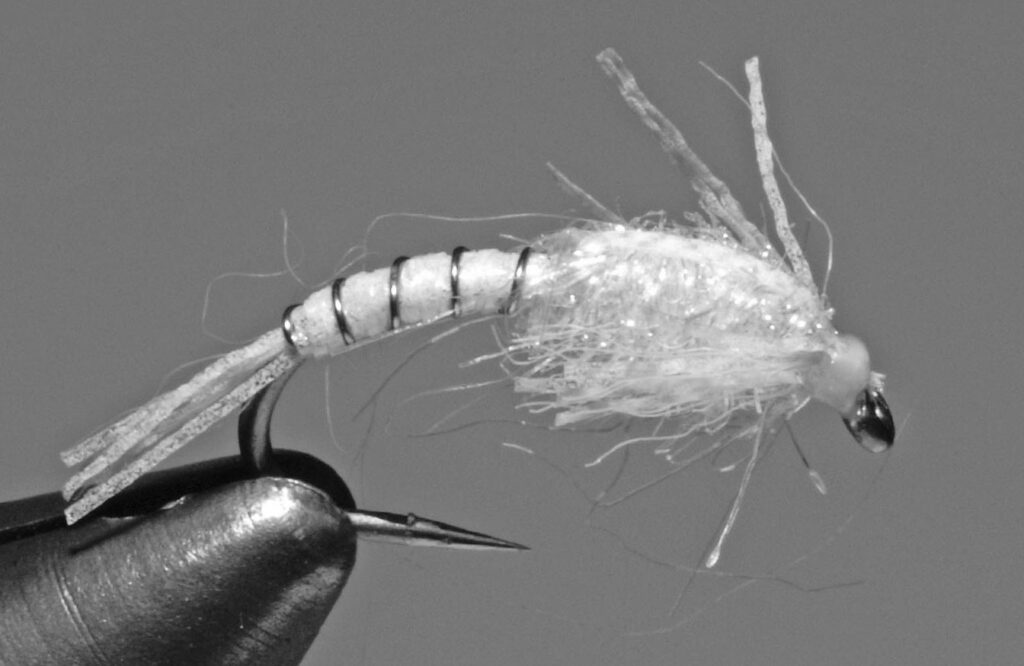
Stefan Mcleod’s BAN
(Bikini Atoll Nymph)
Hook: TMC 2457 (or similar scud or egg hook), size 6 to 14
Thread: Uni white 6/0
Tail: 6 to 8 strands of Glow in the Dark Flashabou
Thorax: Glow in the Dark Flashabou
Ribbing: Uni French medium copper wire
Abdomen: Pearl Ice Dub over .025 lead wraps
Legs: 3 to 6 strands of Glow in the Dark Flashabou
Wing Case: Uni Glow Medium #12, white
Cement: Lagartun Afterglow head cement



